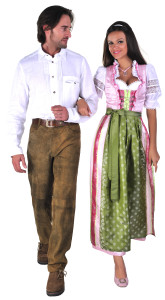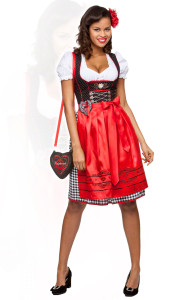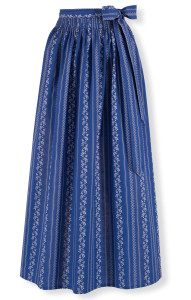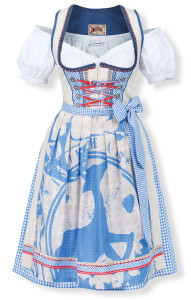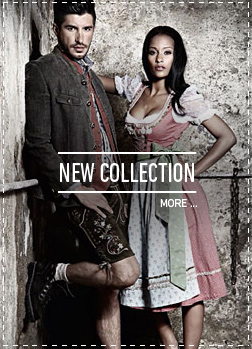Posted by trachten in Bavaria, Dirndl and Lederhosen | Comments Off on All about dirndl aprons
All about dirndl aprons
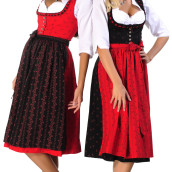
You might think that dirndl aprons are the most boring bit of an Oktoberfest dirndl outfit: after all, aprons symbolise grandmotherly love rather than sexual attraction, so you’d be forgiven for joining the ranks of those who think the décolleté is the dirndl-area where it’s all happening.
At the same time, no dirndl is complete without the apron: no apron, and you’re simply wearing an old-fashioned dress, not traditional Bavarian costume. And although the original aim of the apron was a rather work-a-day one – protecting clothes during work in the kitchen – that doesn’t mean that this part of the dirndl ensemble can’t be a fun and fashionable piece. Especially with regards to the, erm, “other uses” of its ribbons at the waist to signify availability…
But before we take a look at the best fabrics, patterns, and decoration for aprons, let’s just cover the basics.
To make sure your apron suits your dirndl, go through the following checklist:
– your apron should be just shorter than the skirt, ending just over its hemline;
– the fabric should look good with the rest of the dress;
– the colour of your apron and any patterns on it mustn’t clash with the dirndl dress.
Traditional Bavarian Tracht clothing makes things easy as dirndl skirts are always ankle length and in black or grey, meaning that traditional, 88cm-long dirndl aprons in every conceivable colour and pattern can be worn. Things have gotten complicated with the modern, fashionable Oktoberfest dirndls, though, which is why these are mostly sold with a matching apron.
Nevertheless, knowing how to combine skirts and aprons means that you can use additional aprons – either bought or sewed yourself – to customise and rejuvenate your outfit at will. Material with sheen, for example, suits dark dirndls and can be matched with shiny ribbons in the lace-up front of the bodice. Meanwhile, skirts with a checked pattern tend to require plain aprons, while skirts that are themselves plain are literally crying out for a more exciting apron design involving patterns of other decorative elements.
There’s such a broad range of aprons available out there that you’re bound to find one for every outfit – just make sure it’s the right one. Here are the three choices to make when buying your apron.
Fabric
The key thing with apron fabric is that should fall softly over the skirt, meaning that lightweight materials such as cotton, polyester-cotton blends, and silk are used most often. You will now find some in denim, however, as part of the “jeans-dirndl” craze, but even here, the denim weave is as light and thin as possible. As a rule of thumb, an apron gets its airy, feminine grace from being of a lighter fabric than the skirt itself.
The three classics for aprons are: plain, small check, and vertical stripes, these latter usually as a printed floral design. In recent years, however, other forms have come along to match changes in fashion dirndls such as big-grid checked patterns or horizontal feature stripes across plain backgrounds.
Traditional aprons are “smocked”, which means that they have a “smock” on the waistband to gather the fabric of the apron in pleats. Some newer-style aprons replace complicated batches of pleats with simple folds, but whatever the case, no apron ever looked shapely without a smock. The other key decorative elements on aprons are things like floral sew-on stripes, either long the waist or at the hem, usually.
Recently, the trend towards printed motifs has even reached aprons: so for all their its traditional aura, Bavarian designers are clearly not afraid of adapting them!

